I’ve been known to dig through the lunch bins recycling Styrofoam trays for printing projects. I save newspapers for delicate ceramic projects and concentrated juice can tops for robot heads. Is it enough? No way.
Sometimes I start to collect things and then abandon the idea when I can’t come up with an art project or the pile threatens my limited storage. Then back to the bin they go. Depressing. But every once in a while, I adapt or create an art lesson that uses up my collections of recyclables.
Here are some of my favorite projects over the years using recycled materials…

This lively little lion, inspired by the illustrations of Clare Youngs, is sure to have your students roaring with excitement! With only a few basic shapes involved, students can easily create a lion with stunning results.
Students will focus on line and pattern to create bold, energetic designs with a waterproof marker on all pieces of their lion before overlapping the pieces to create one cohesive piece.
This lesson is a great opportunity to teach students how to attach pieces of cardboard together using clothespins to ensure that everything dries in the correct position and attaches securely.
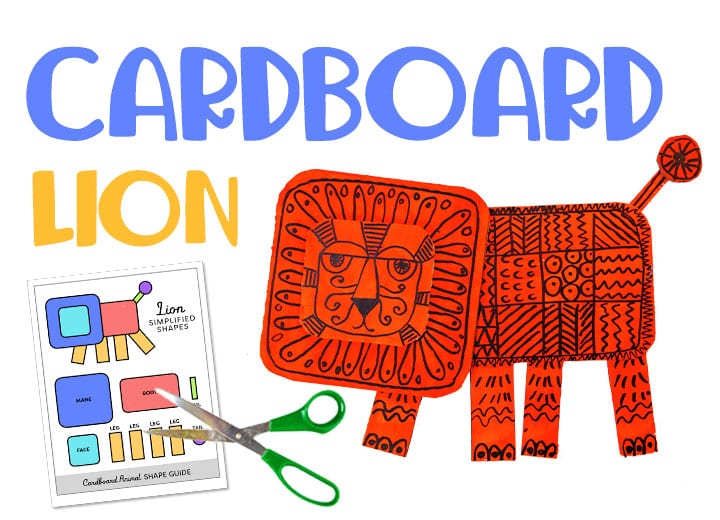
This lesson came to me via Painted Paper. Laura’s colorful little darlings inspired me to start collecting tag board from the teachers workroom. After I got enough to crop at least 60 rectangles, we embarked on our project. I added concentrated juice can tops, soda can tabs, plastic fruit baskets and old buttons and yes, I actually snip them off all my old clothes!
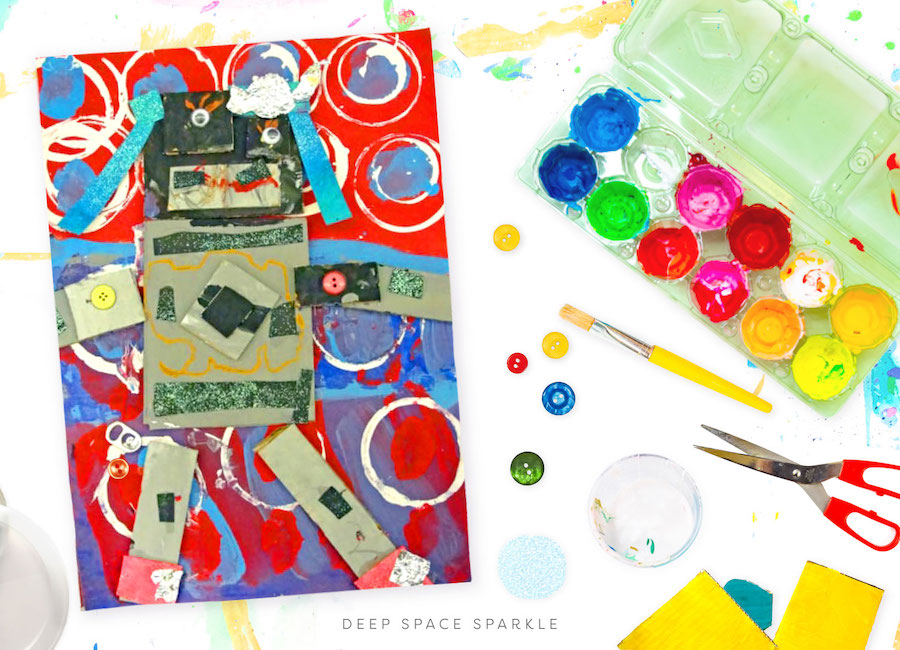
Using similar recycled materials, I created a rocket and space collage. I saw this idea behind a glass case at the Aerospace Museum at The Los Angeles Science Center. I snapped a picture and began collecting tag board scraps. You’ll need something heavy like tagboard but you could also cut up corrugated cardboard boxes or cereal boxes. It’s a dynamic piece that not only uses up old scraps but covers many art concepts. A real keeper!
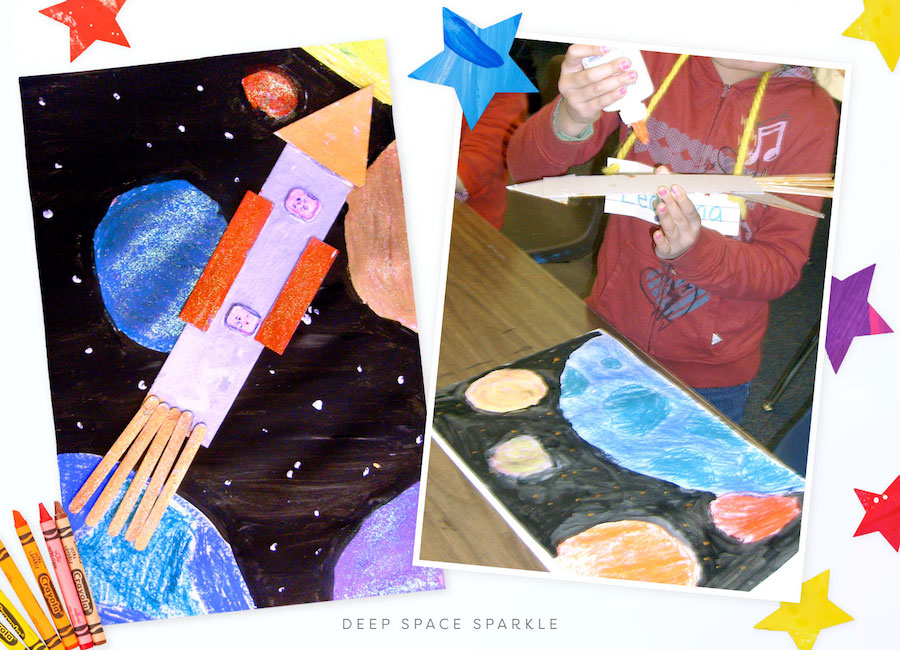
Foil Sea Turtle and Fish Collage
This is a bit of a half and half project. You’ll need new tin foil but it’s a fantastic use for old fruit and vegetable net bags. I collected dozens and made my own texture boards. My students created fish and sea turtles but you could change up the subject to include almost anything. The original idea came from a Usborne Art Book.
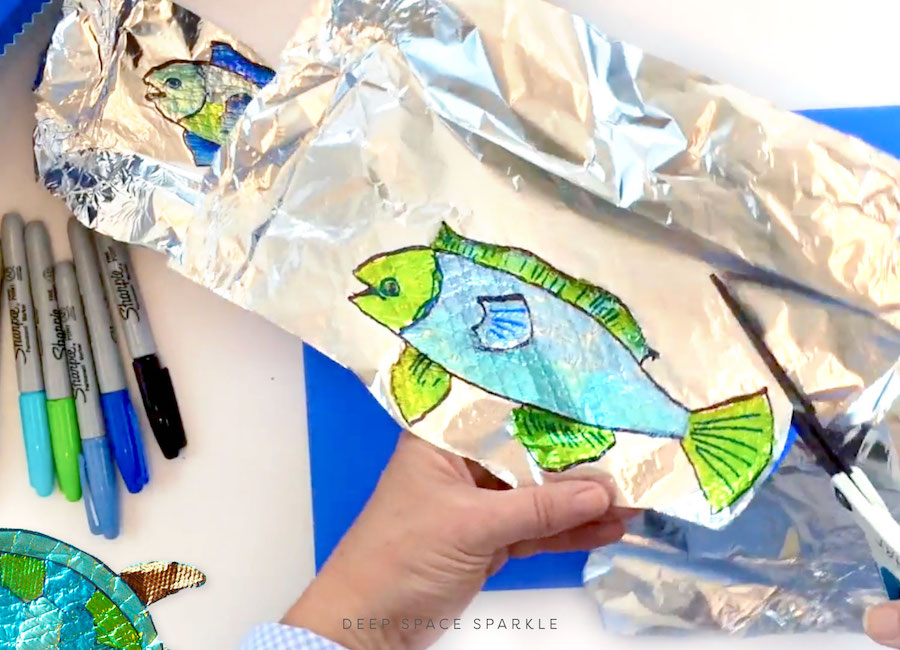
Have some cardboard boxes lying around?
Of course, you do! I make it a point to keep a stack of trimmed cardboard pieces to use in the art room. I find many uses for cardboard: for printmaking, scraping paint, to act as looms for weavings and my personal favorite, to paint on.
And these painted Tropical Fish are simply the easiest and most colorful projects to do.
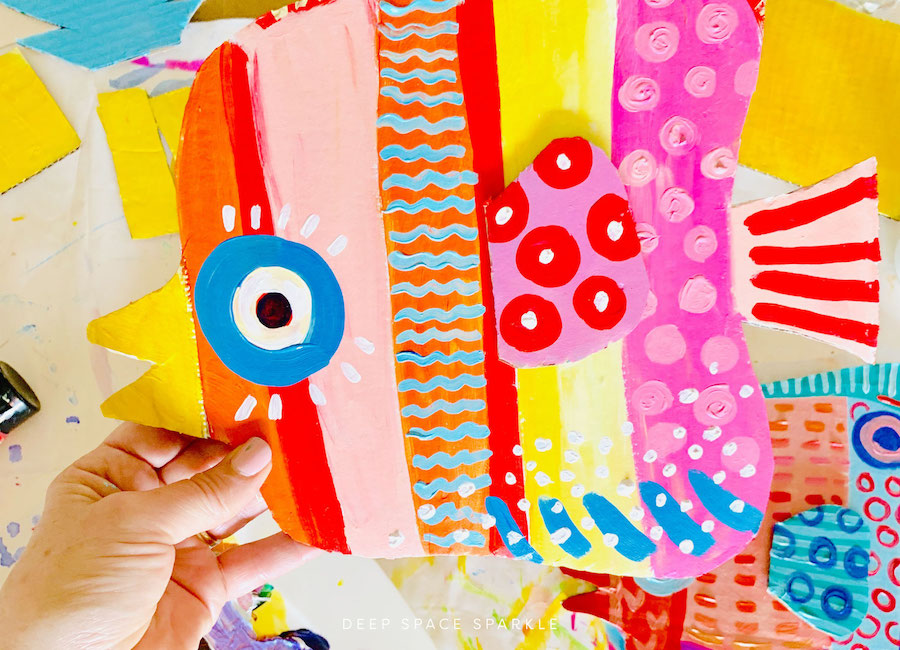
Catrina Dolls may require some collecting. Egg cartons, newspapers, old lunch bags, paper plates or recycled card stock, cereal boxes and toilet paper rolls and paper towel rolls. The results are worth it!
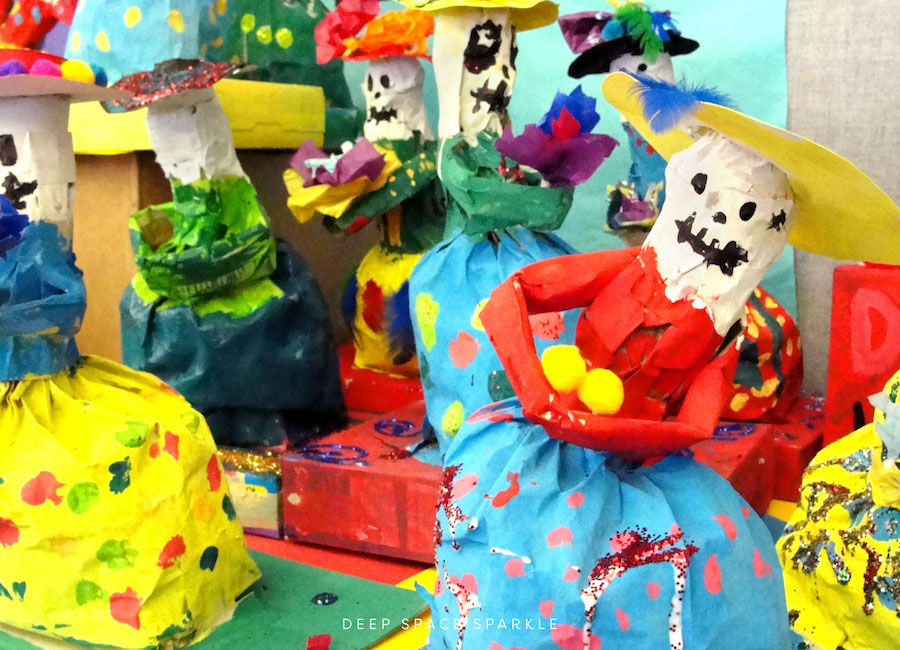
Matisse Art Projects
Matisse Name Panels. When you want to use up paper scraps there is no better artist to inspire you than Matisse. Both of these lessons require only one new piece of paper for the base. Everything else can be found through scraps. Do this project at the end of the year when your scrap box is overflowing!
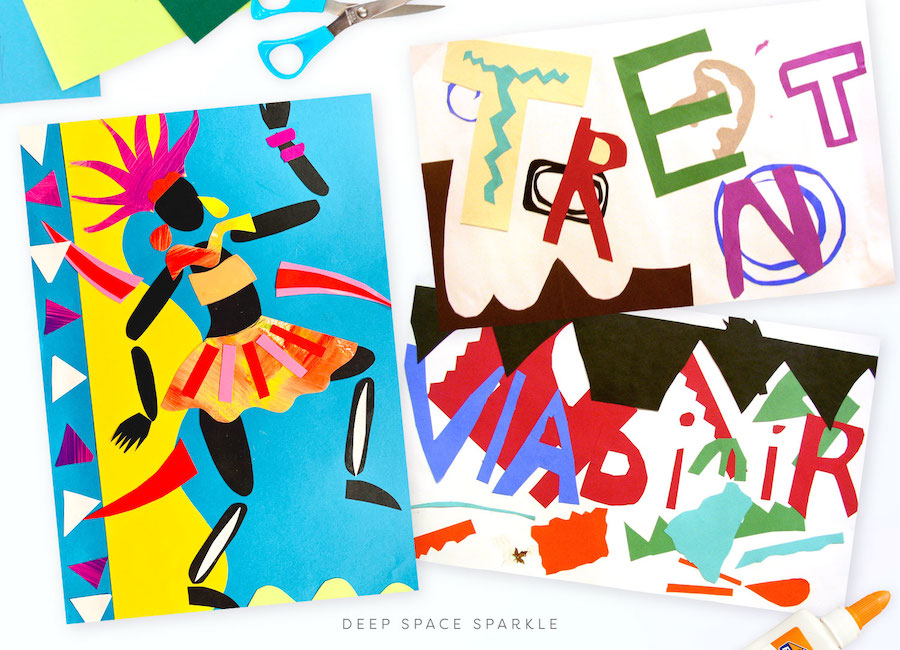
These aliens use a bevvy of recycled materials: plastic twirly’s from a plastic manufacturer (okay, I don’t know what the heck they are) and lots and lots of paper scraps, old buttons, old fabric, plastic tops, etc.
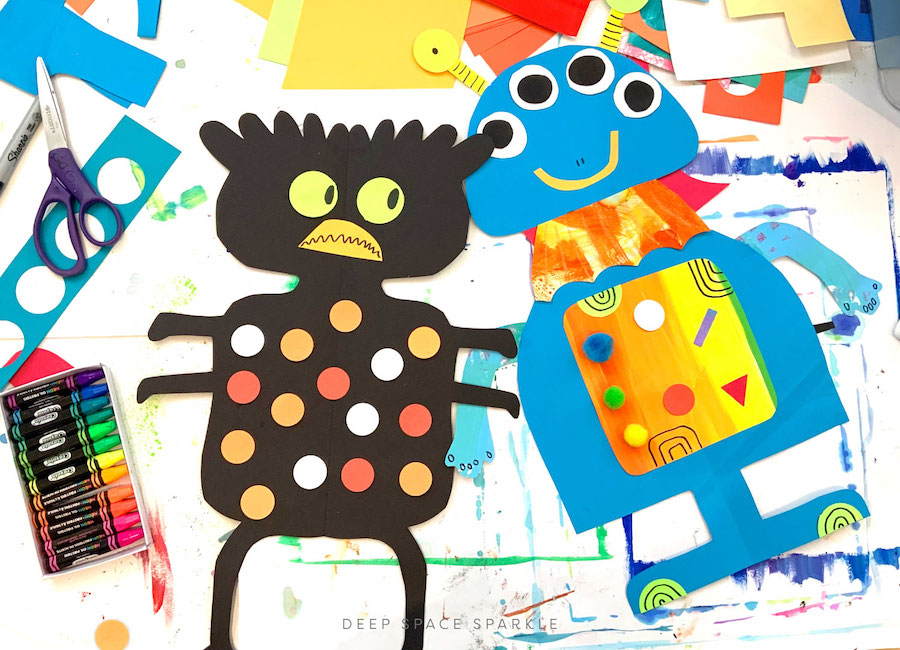

Household Supplies to Save
– Toilet paper rolls
– Paper towel rolls
– Egg cartons
– Tag board, poster board
– Tissue paper and gift wrap from every celebration
– Curly ribbon
– Buttons from discarded clothing
– Fabric scraps from discarded clothing
– Fruit baskets & net bads
– Old lunch bags
– Plastic bread bags – good for stuffing with newspaper and using as a base for papier-mâché
– Paper scraps from art projects – divide into painted paper, white paper and colored paper
– Old markers – to use as rolling pins for ceramics
– Dish detergent/shampoo/plastic bottles for form-based projects
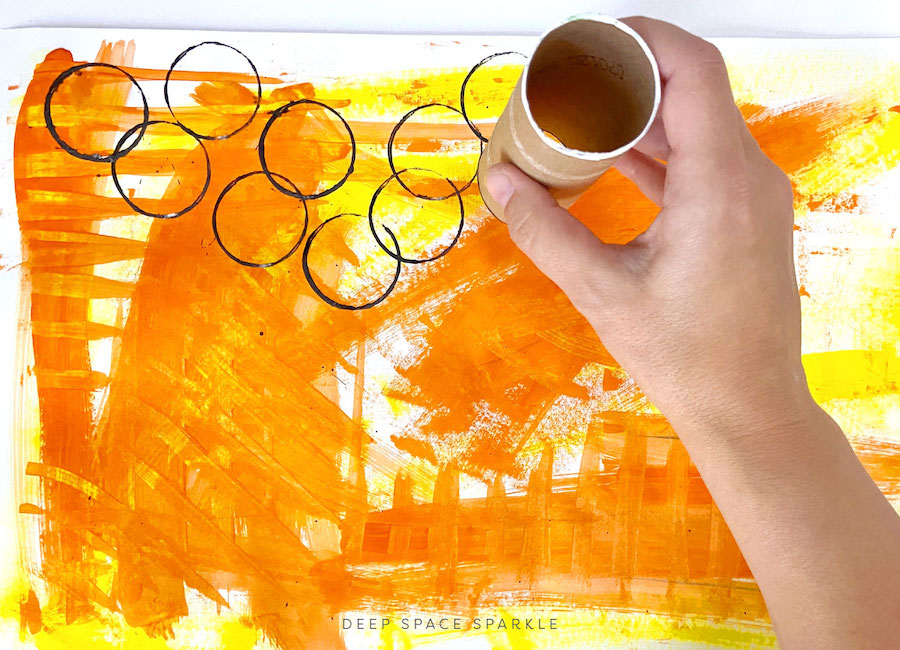
Some Tips…
Amy wrote – “I’ve been collecting old clothes… stained, holey clothes that would normally be trashed, and my kids are weaving with them… as well as cutting up plastic bags, some old screen I found, bags of chips, etc. The kids are encouraged to bring anything in from home that they can weave with too… as long as it is something that was headed to the trash can or recycling bin.”
Susan wrote – “I love doing decoupage wine bottles with my students. If you don’t drink wine, most any restaurant will save them for you.”
Midge wrote – “I reuse all my Clorox wipe containers for my markers and colored pencils and black sharpies and paint pens. I reuse all my large butter tubs to house oil pastels and crayons, and any small ones I get but beads and such in each… I never buy containers! Also I use egg cartons for paint with my kiddos! One pump per section per color and it works perfect on portion control and the lid closes and keeps the paint fresh for 2 weeks!”
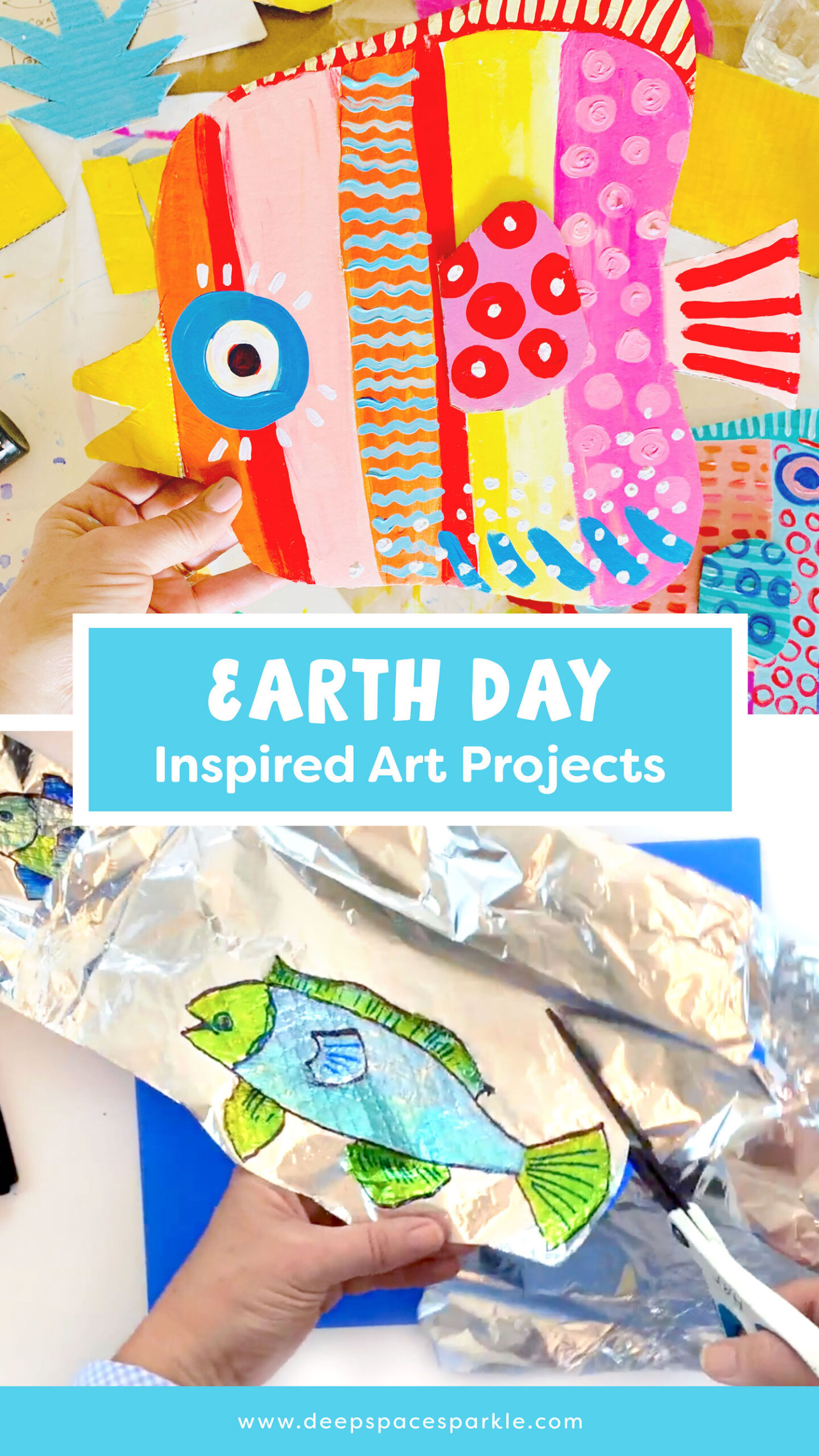

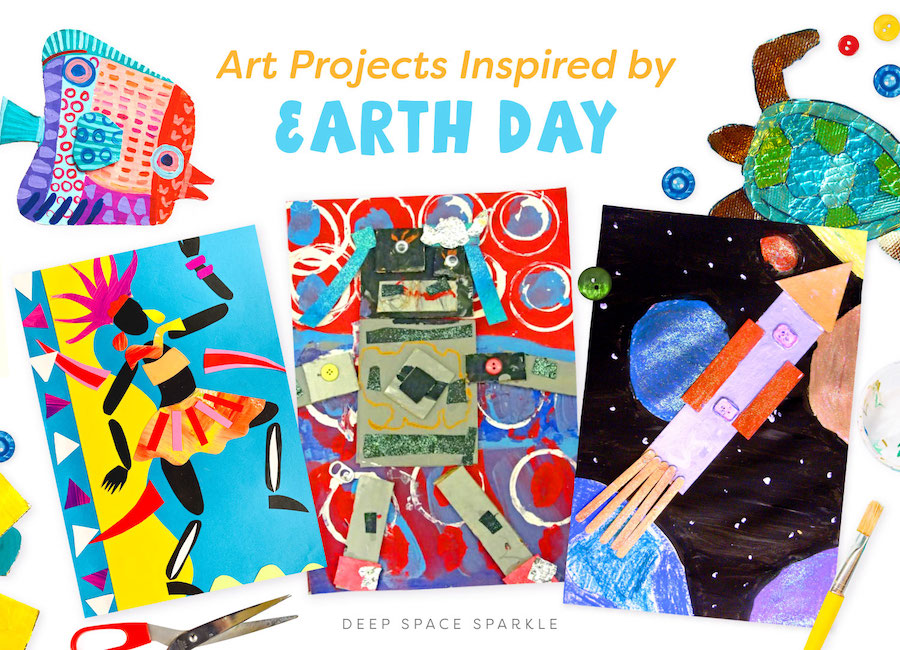











These are wonderful – what creativity!
Patty you are such an inspiration!!! I am going to try the Matisse project as well as the collages. I have never done collages with my students…any tips?
Thank you so much for sharing your great ideas!!
I think the biggest tip is to have the children cut out the big pieces first and layer back to front. So often a kid will cut out a shape and glue it down immediately. Ask them to wait until they have a few pieces then talk about composition. I keep paper clips nearby so kids can clip their loose pieces together until the next class.
Hi Megan,
I’m not sure if you have access to a smartboard but technology has been my co-teacher in the art classroom when it comes to collages. I love collaging myself but I never really delved into it with my students until this year. All collage lessons I chose were successful because we do them together through our district’s tiered instructional model: I do, You do, We do. I teach K-4 and students may not begin the project without watching me do it first. As they do it after me I rotate the class to make sure they understand the steps before return to the screen to proceed with a thumbs up for next steps. It does take time, but I always make it fun and engaging to watch. This tip has helped not only with collaging but with all my projects. It helps to have students watch each step for cutting, positioning pieces, layering and gluing. Students even see the mistakes I make and I make it a teaching moment because it’s always an opportunity to call on a student to help me fix/make adjustments to my artwork.
Awesome projects!! I just wish we could use egg cartons too but with children who have allergies to all sorts of things including eggs I Just have to be careful.
Cheryl H
Hi Patty,
We have 27 more days of school left, but I’m totally out of paper for painting! Any suggestions? I do have printer paper left. I don’t have a kiln or clay so that rules out any pottery making….
Thanks.
Try doing a weaving project with recycled paper…newspapers, magazines, etc.
Also, you can paint on card stock, or perhaps use markers on card stock….drawing on copy paper? If you have colored paper, try painting on that using tempera paints mixed with a bit of white paint or even chalk. Good luck!
I am a 5-6th grade art teacher who is so impressed with your recent generosity of offering us lesson plans that we can post. Not only do you offer the lesson plan but a video as well. I find making videos challenging but I want to succeed. I can learn from watching yours. Thank you so much!!
Do you have the directions for the painted tropical fish our of cardboard? Love this idea!
Hi Lori. You can click on the link below to receive the instructions for the Tropical Fish lesson directly to your inbox https://www.deepspacesparkle.com/recycled-tropical-fish-earth-day-project/ Enjoy.
thank you! I realized this right after asking! 🙁
Also, any artist recommendations I can connect with this lesson? I try to incorporate in most of my lessons throughout the year. Maybe Clare Young? Appreciate your quick response! Thanks.
Thankyou for this and for sharing other people’s great ideas.